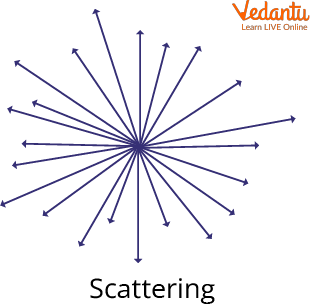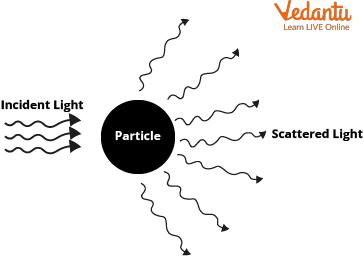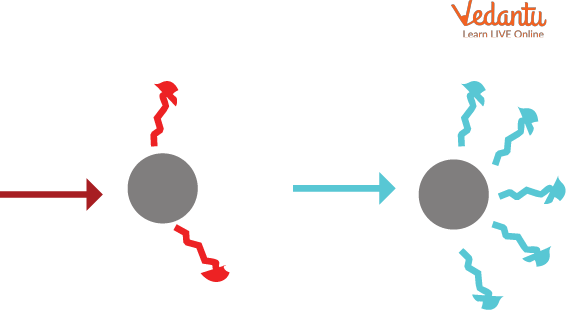




Overview of Sky Blue Scattering
Whenever we look at the beautiful and peaceful sky, there always comes a question: where does the sky start or end? So the sky is just our atmosphere which is about 16 km upward, and it's where most of the Rayleigh scattering happens.
If you get a little bit confused after listening to the word 'scattering' but don't worry after reading this article, all your doubts will be cleared. Here, we will discuss the scattering of light, which scatters more and which scatters less, why the sky seems blue to us and many other interesting things we will learn from this article, so let's get started.

Scattering
What is Scattering?
Light is easily seen from its source, but when it passes from one medium to another, then some part of the light is absorbed by the particles in the medium, which is preceded by its subsequent radiation in a particular direction, and this phenomenon is called scattering of light.
How much the light will be scattered depends upon the size of the particles and also upon the wavelength of the light.

Scattering of Light
Why is the Sky Blue?
Have you ever looked at the sky and wondered why it's blue in colour and after sunset it becomes black? Why does the sky scatter blue colour?
Some people think that sky is blue because sunlight reflects off the ocean back to the sky, which makes it blue, some think it's because of the water molecules present in the air, but it's wrong because the sky is blue even in those areas where there is extremely dryness like the desert area.
Still in doubt? Don't worry; here's the answer: we see the sky as blue because of the way sunlight interacts with our atmosphere. So when we see sunlight, it seems to have one colour, but if you ever saw a rainbow or played with a prism, you have seen the actual 7 colours of sunlight which we remember from the name VIBGYOR (Violet, Indigo, Blue, Green, Yellow, Orange, Red).
So, in the same way, when sunlight reaches the earth's atmosphere, the sunlight gets scattered in all directions by the gases and the particles which are present in the air. So blue light scatters more than any other colour, because it travels in smaller, shorter waves, and that's why the sky seems to be blue in colour.

Blue Sky
Why does Sky Blue Scatter More than Red?
Light travels in a straight line always, unless something gets in its way, and it reflects, bends or scatters it. But right now, we are talking about scattering, so let's continue with it.

Blue Scatter more than Red
So, the point was that why does the colour blue scatter more than red? It's because blue light has a short wavelength, while red has a long wavelength. And the shorter the wavelength, the more light will be scattered. That's why blue light scatters more than red light.
Points to Keep in Mind
Now, let’s take a look at some important points of mind:
Light travels in a straight line.
The sky seems blue because of how sunlight interacts with the atmosphere.
Sunlight appears to be only white in colour, but it has 7 colours.
The 7 colours of sunlight will be called VIBGYOR (Violet, Indigo, Blue, Green, Yellow, Orange, Red).
Not all planets have blue skies because, depending upon the atmosphere, light scatters.

Sunlight
Summary
So we learned so many wonderful things which seemed to be a little bit difficult in a very enjoyable way. In this article, we learned about why the sky is blue. We learned about the scattering of light and what it means, we learned why the sky blue scatters more than any other colour, how many colours the sunlight has in it and how we see it; we also discussed where the sky starts.
We answered a very important question that “why does the sky scatter blue colour” in this article. We hope that after reading this article, you may get the answer to every question which comes to mind when we look at the sky.
FAQs on Why is Sky Blue - The Blue Colour Scattering
1. Are scattering and reflection the same?
No, scattering is wave property, and reflection is particle property.
2. Why is the blue sky called Rayleigh scattering?
To answer the question “why is the blue sky called Rayleigh scattering” we have to be aware of the fact that Lord Rayleigh was the one who calculated the scattered intensity of light. That is why this phenomenon is named after him.
3. How many types of scattering are there?
There are 3 types of scattering:
Mie scattering
Rayleigh scattering
Non-selective scattering









